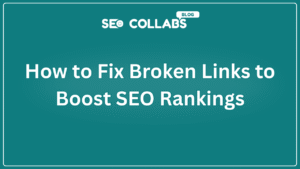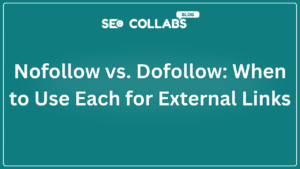Black Hat Link Building refers to unethical practices aimed at manipulating search engine rankings through deceptive tactics. While these methods may offer short-term gains, they risk severe penalties and long-term damage. This comprehensive guide explores Black Hat techniques, their consequences, and how to recover if affected.
Table of Contents
- What is Black Hat Link Building?
- Common Black Hat Link Building Techniques
- Risks of Black Hat Link Building
- Why Do Some SEOs Use Black Hat Methods?
- How Search Engines Detect Black Hat Tactics
- Recovering from Black Hat SEO
- Case Studies
- The Grey Area: Grey Hat SEO
- Ethical Alternatives: White Hat Link Building
- Conclusion
What is Black Hat Link Building?
Black Hat Link Building involves tactics that violate search engine guidelines to artificially boost rankings. Unlike White Hat link building methods, which focus on user value, Black Hat strategies exploit loopholes for quick results, often disregarding sustainability and ethics.
Key Contrast with White Hat:
- White Hat: Ethical, user-focused, compliant with guidelines.
- Black Hat: Manipulative, risky, prioritizes search engines over users.
Common Black Hat Link Building Techniques
1. Purchasing Links
- Description: Buying backlinks from low-quality or irrelevant sites.
- Example: Acquiring links from “link farms” in exchange for payment.
- Risk: Google’s algorithms easily detect unnatural link patterns.
2. Private Blog Networks (PBNs)
- Description: A network of websites created solely to interlink and pass artificial authority.
- Example: A network of expired domains repurposed to link to a main site.
- Risk: Deindexation of all linked sites if discovered.
3. Spam Comments and Forum Links
- Description: Posting irrelevant links in blog comments, forums, or social media.
- Example: Dropping a link to a gambling site in a fitness blog’s comment section.
- Risk: Marked as spam, harming site credibility.
4. Keyword Stuffing in Anchor Text
- Description: Overusing exact-match keywords (e.g., “cheap insurance”) to manipulate rankings.
- Example: Excessive use of “best SEO agency” in footer links.
- Risk: Penalized by Google’s Penguin algorithm.
5. Cloaking and Hidden Links
- Description: Showing search engines different content than users (cloaking) or hiding links (e.g., white text on white background).
- Example: Redirecting bots to a keyword-stuffed page while users see normal content.
- Risk: Immediate manual penalties for deception.
6. Automated Link Building Tools
- Description: Using bots to generate mass links via scripts or software.
- Example: Tools that auto-post links on directories or forums.
- Risk: High likelihood of triggering algorithmic filters.
Risks of Black Hat Link Building
- Search Engine Penalties
- Algorithmic: Google’s Penguin update and SpamBrain target spammy links.
- Manual Actions: Human reviewers can deindex sites or drop rankings.
- Loss of Traffic and Revenue
- Penalized sites often lose 50–100% of organic traffic.
- Reputation Damage
- Brands associated with spam may lose customer trust.
Why Do Some SEOs Use Black Hat Methods?
- Quick Results: Temporary ranking boosts.
- Ignorance of Risks: Newcomers unaware of long-term consequences.
- Profit Motive: Agencies promising fast rankings for client retention.
How Search Engines Detect Black Hat Tactics
- Algorithmic Filters:
- Penguin: Targets spammy backlinks.
- SpamBrain: AI-based system detecting unnatural patterns.
- Manual Reviews: Reports from users or Google’s quality raters.
Recovering from Black Hat SEO
- Conduct a Backlink Audit
- Tools: Ahrefs, SEMrush, or Google Search Console.
- Action: Identify toxic links (e.g., PBNs, irrelevant directories).
- Disavow Toxic Links
- Process: Submit a disavow file via Google Search Console.
- Note: Use cautiously—only disavow confirmed spam.
- Remove Harmful Links
- Outreach: Contact webmasters to remove spammy links.
- Shift to White Hat Strategies
- Focus: Create quality content, earn natural links, and follow E-E-A-T (Expertise, Authoritativeness, Trustworthiness).
Case Studies
- JCPenney (2011): Lost rankings after The New York Times exposed paid links.
- Overstock (2011): Penalized for offering discounts to edu sites for links.
The Grey Area: Grey Hat SEO
- Definition: Tactics that bend rules without outright violation (e.g., aggressive guest posting).
- Risk: Still vulnerable to algorithm updates.
Ethical Alternatives: White Hat Link Building
- Content Marketing: Publish original research or guides.
- Digital PR: Earn media coverage through press releases.
- Guest Blogging: Write for reputable, relevant sites.
Conclusion
Black Hat Link Building is a high-risk gamble with fleeting rewards. The rise of AI-driven detection (e.g., SpamBrain) and stringent penalties make ethical SEO the only sustainable path. Prioritize user value, transparency, and compliance to build lasting authority.
Also Read

Need Help? Audit your backlinks today and transition to White Hat strategies. Your site’s future depends on it.




